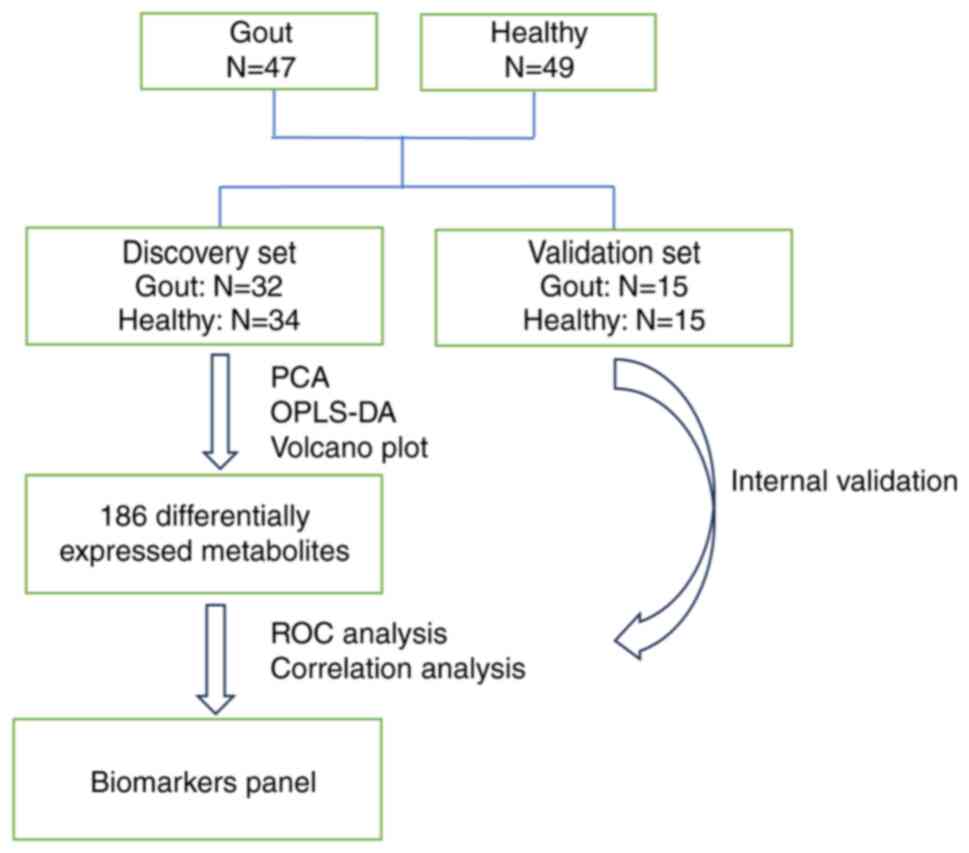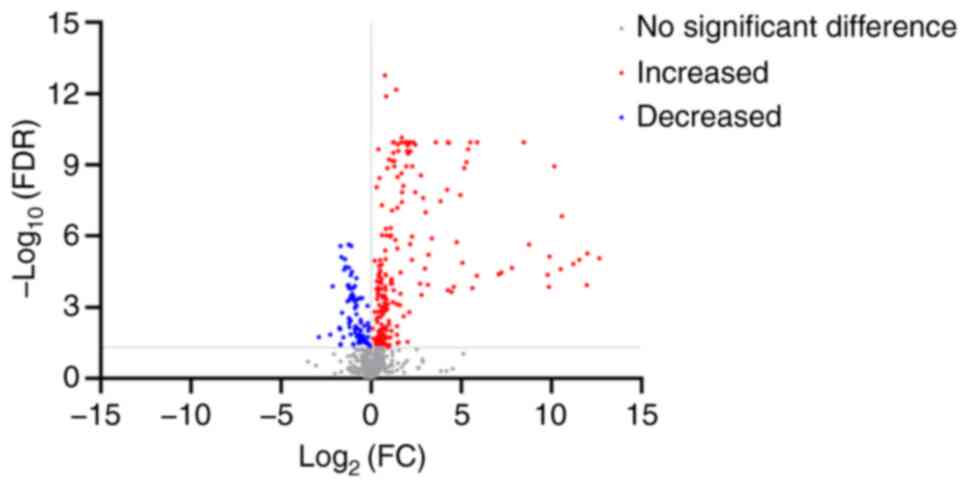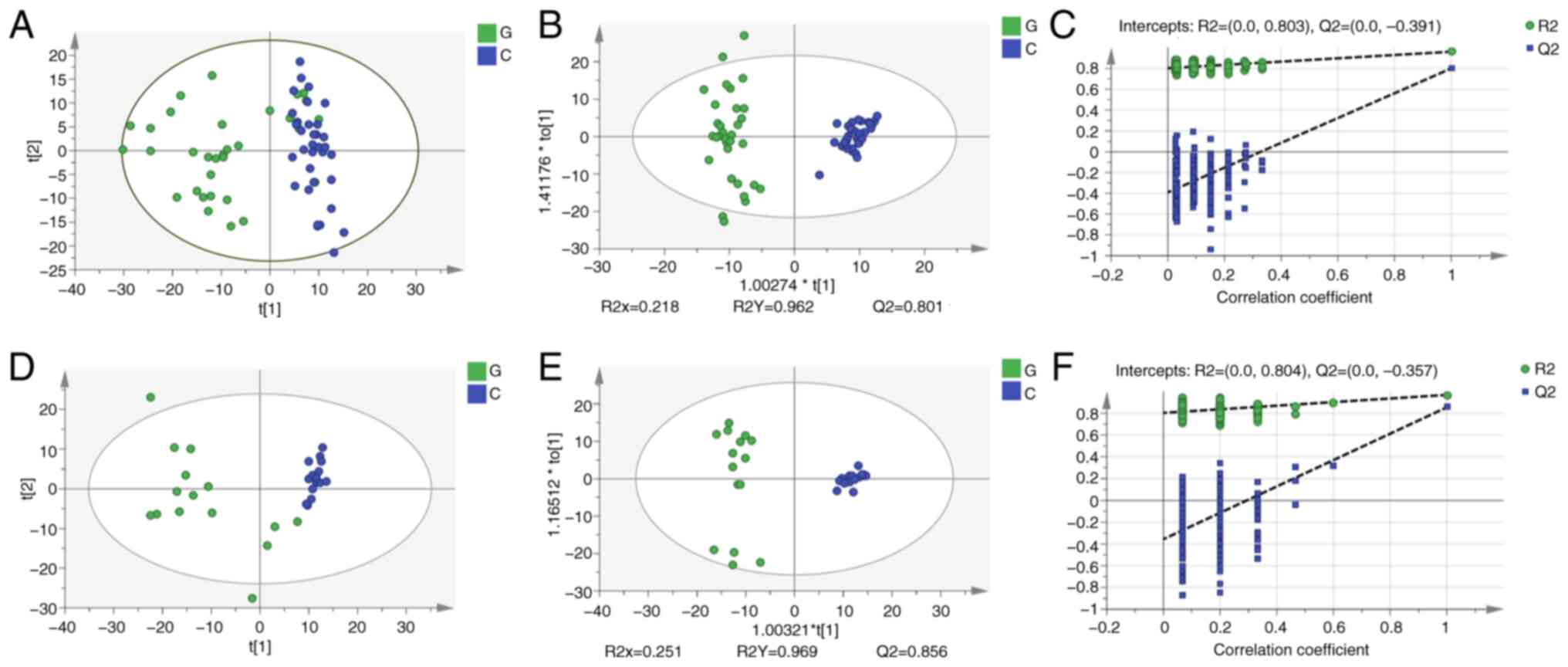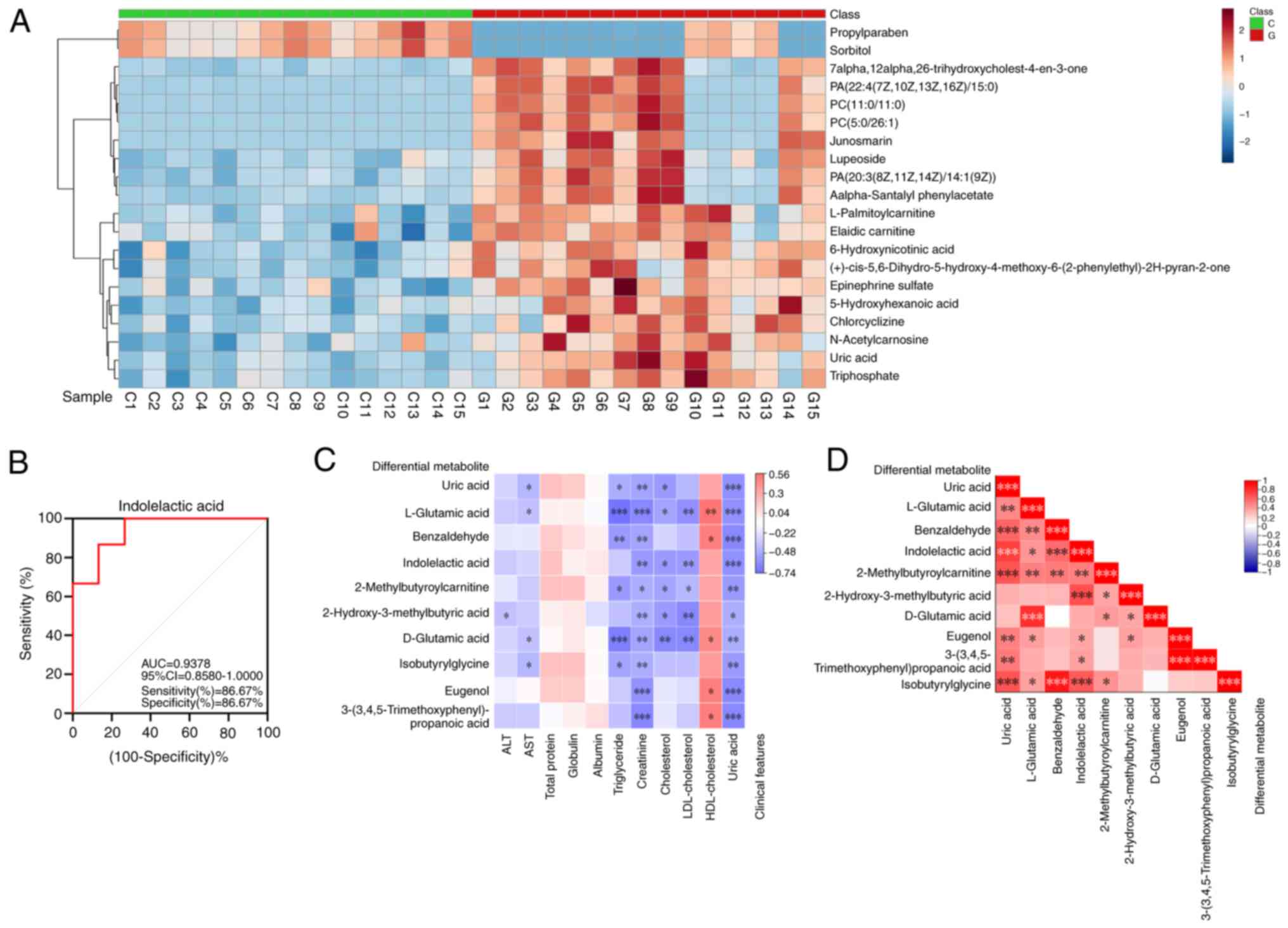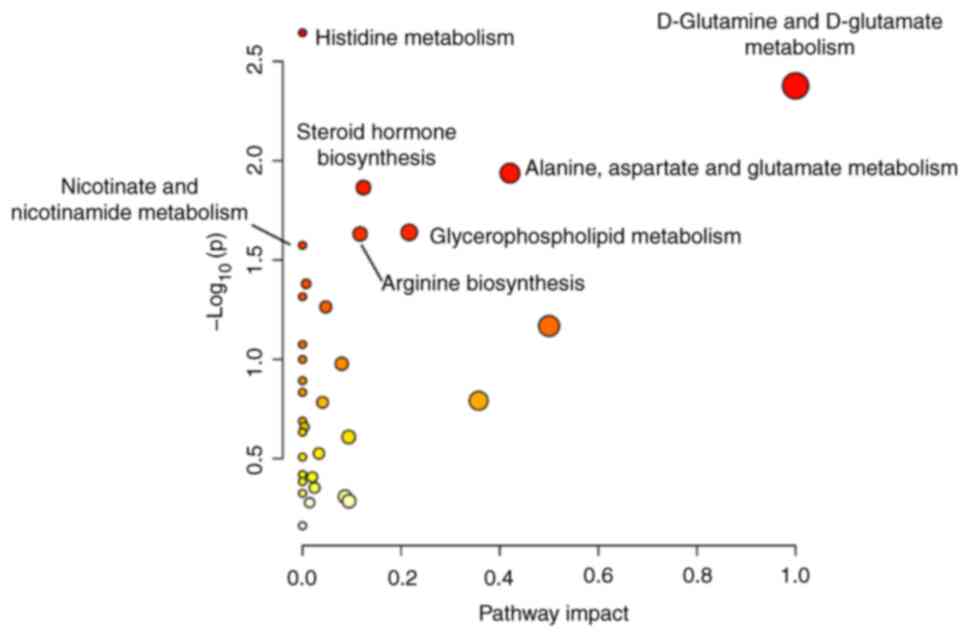|
1
|
Dalbeth N, Gosling AL, Gaffo A and
Abhishek A: Gout. Lancet. 397:1843–1855. 2021.PubMed/NCBI View Article : Google Scholar
|
|
2
|
Petty HR, Rathod-Mistry T, Menz HB and
Roddy E: Foot structure, pain and functional ability in people with
gout in primary care: Cross-sectional findings from the clinical
assessment study of the foot. J Foot Ankle Res.
12(8)2019.PubMed/NCBI View Article : Google Scholar
|
|
3
|
Singh G, Lingala B and Mithal A: Gout and
hyperuricaemia in the USA: Prevalence and trends. Rheumatology
(Oxford). 58:2177–2180. 2019.PubMed/NCBI View Article : Google Scholar
|
|
4
|
Pisaniello HL, Lester S, Gonzalez-Chica D,
Stocks N, Longo M, Sharplin GR, Dal Grande E, Gill TK, Whittle SL
and Hill CL: Gout prevalence and predictors of urate-lowering
therapy use: Results from a population-based study. Arthritis Res
Ther. 20(143)2018.PubMed/NCBI View Article : Google Scholar
|
|
5
|
Rai SK, Aviña-Zubieta JA, McCormick N, De
Vera MA, Shojania K, Sayre EC and Choi HK: The rising prevalence
and incidence of gout in British Columbia, Canada: Population-based
trends from 2000 to 2012. Semin Arthritis Rheum. 46:451–456.
2017.PubMed/NCBI View Article : Google Scholar
|
|
6
|
Kim JW, Kwak SG, Lee H, Kim SK, Choe JY
and Park SH: Prevalence and incidence of gout in Korea: Data from
the national health claims database 2007-2015. Rheumatol Int.
37:1499–1506. 2017.PubMed/NCBI View Article : Google Scholar
|
|
7
|
Liu R, Han C, Wu D, Xia X, Gu J, Guan H,
Shan Z and Teng W: Prevalence of hyperuricemia and gout in Mainland
China from 2000 to 2014: A systematic review and meta-analysis.
Biomed Res Int. 2015(762820)2015.PubMed/NCBI View Article : Google Scholar
|
|
8
|
Li X, Gao J and Tao J: Purinergic
signaling in the regulation of gout flare and resolution. Front
Immunol. 12(785425)2021.PubMed/NCBI View Article : Google Scholar
|
|
9
|
Richette P, Doherty M, Pascual E, Barskova
V, Becce F, Castañeda-Sanabria J, Coyfish M, Guillo S, Jansen TL,
Janssens H, et al: 2016 Updated EULAR evidence-based
recommendations for the management of gout. Ann Rheum Dis.
76:29–42. 2017.PubMed/NCBI View Article : Google Scholar
|
|
10
|
Fraga-Corral M, Carpena M, Garcia-Oliveira
P, Pereira AG, Prieto MA and Simal-Gandara J: Analytical
metabolomics and applications in health, environmental and food
science. Crit Rev Anal Chem. 52:712–734. 2022.PubMed/NCBI View Article : Google Scholar
|
|
11
|
Chen J, Li T, Huang D, Gong W, Tian J, Gao
X, Qin X, Du G and Zhou Y: Integrating UHPLC-MS/MS quantitative
analysis and exogenous purine supplementation to elucidate the
antidepressant mechanism of Chaigui granules by regulating purine
metabolism. J Pharm Anal. 13:1562–1576. 2023.PubMed/NCBI View Article : Google Scholar
|
|
12
|
Liu Y, Zhang X, Lin W, Kehriman N, Kuang W
and Ling X: Multi-factor combined biomarker screening strategy to
rapidly diagnose Alzheimer's disease and evaluate drug effect based
on a rat model. J Pharm Anal. 12:627–636. 2022.PubMed/NCBI View Article : Google Scholar
|
|
13
|
Yü TF, Adler M, Bobrow E and Gutman AB:
Plasma and urinary amino acids in primary gout, with special
reference to glutamine. J Clin Invest. 48:885–894. 1969.PubMed/NCBI View Article : Google Scholar
|
|
14
|
Mahbub MH, Yamaguchi N, Takahashi H, Hase
R, Amano H, Kobayashi-Miura M, Kanda H, Fujita Y, Yamamoto H,
Yamamoto M, et al: Alteration in plasma free amino acid levels and
its association with gout. Environ Health Prev Med.
22(7)2017.PubMed/NCBI View Article : Google Scholar
|
|
15
|
Dalbeth N, Choi HK, Joosten LAB, Khanna
PP, Matsuo H, Perez-Ruiz F and Stamp LK: Gout. Nat Rev Dis Primers.
5(69)2019.PubMed/NCBI View Article : Google Scholar
|
|
16
|
Li Q, Wei S, Wu D, Wen C and Zhou J:
Urinary metabolomics study of patients with gout using gas
chromatography-mass spectrometry. Biomed Res Int.
2018(3461572)2018.PubMed/NCBI View Article : Google Scholar
|
|
17
|
Neogi T, Jansen TLTA, Dalbeth N, Fransen
J, Schumacher HR, Berendsen D, Brown M, Choi H, Edwards NL,
Janssens HJEM, et al: 2015 Gout classification criteria: An
American college of rheumatology/European league against rheumatism
collaborative initiative. Ann Rheum Dis. 74:1789–1798.
2015.PubMed/NCBI View Article : Google Scholar
|
|
18
|
Liu H, Xu M, He Q, Wei P, Ke M and Liu S:
Untargeted serum metabolomics reveals specific metabolite
abnormalities in patients with Crohn's disease. Front Med
(Lausanne). 9(814839)2022.PubMed/NCBI View Article : Google Scholar
|
|
19
|
Luan H, Gu W, Li H, Wang Z, Lu L, Ke M, Lu
J, Chen W, Lan Z, Xiao Y, et al: Serum metabolomic and lipidomic
profiling identifies diagnostic biomarkers for seropositive and
seronegative rheumatoid arthritis patients. J Transl Med.
19(500)2021.PubMed/NCBI View Article : Google Scholar
|
|
20
|
Kuo CF, Grainge MJ, Mallen C, Zhang W and
Doherty M: Comorbidities in patients with gout prior to and
following diagnosis: Case-control study. Ann Rheum Dis. 75:210–217.
2016.PubMed/NCBI View Article : Google Scholar
|
|
21
|
Pagliara AS and Goodman AD: Elevation of
plasma glutamate in gout. Its possible role in the pathogenesis of
hyperuricemia. N Engl J Med. 281:767–770. 1969.PubMed/NCBI View Article : Google Scholar
|
|
22
|
Servià L, Jové M, Sol J, Pamplona R, Badia
M, Montserrat N, Portero-Otin M and Trujillano J: A prospective
pilot study using metabolomics discloses specific fatty acid,
catecholamine and tryptophan metabolic pathways as possible
predictors for a negative outcome after severe trauma. Scand J
Trauma Resusc Emerg Med. 27(56)2019.PubMed/NCBI View Article : Google Scholar
|
|
23
|
Wang X, Liu J, Hui X and Song Y:
Metabolomics applied to cord serum in preeclampsia newborns:
Implications for neonatal outcomes. Front Pediatr.
10(869381)2022.PubMed/NCBI View Article : Google Scholar
|
|
24
|
Liu Z, Jin L, Ma Z, Nizhamuding X, Zeng J,
Zhang T, Zhang J, Zhou W and Zhang C: Abnormal kynurenine-pathway
metabolites in gout: Biomarkers exploration based on orthogonal
partial least squares-discriminant analysis. Clin Chim Acta.
549(117531)2023.PubMed/NCBI View Article : Google Scholar
|
|
25
|
Suo H, Shishir MRI, Wang Q, Wang M, Chen F
and Cheng KW: Red wine high-molecular-weight polyphenolic complex
ameliorates high-fat diet-induced metabolic dysregulation and
perturbation in gut microbiota in mice. J Agric Food Chem.
71:6882–6893. 2023.PubMed/NCBI View Article : Google Scholar
|
|
26
|
Farook VS, Reddivari L, Chittoor G,
Puppala S, Arya R, Fowler SP, Hunt KJ, Curran JE, Comuzzie AG,
Lehman DM, et al: Metabolites as novel biomarkers for childhood
obesity-related traits in Mexican-American children. Pediatr Obes.
10:320–327. 2015.PubMed/NCBI View
Article : Google Scholar
|
|
27
|
Huang Y, Xiao M, Ou J, Lv Q, Wei Q, Chen
Z, Wu J, Tu L, Jiang Y, Zhang X, et al: Identification of the urine
and serum metabolomics signature of gout. Rheumatology (Oxford).
59:2960–2969. 2020.PubMed/NCBI View Article : Google Scholar
|
|
28
|
Liu K, Jia B, Zhou L, Xing L, Wu L, Li Y,
Lu J, Zhang L and Guan S: Ultraperformance liquid chromatography
coupled with quadrupole time-of-flight mass spectrometry-based
metabolomics and lipidomics identify biomarkers for efficacy
evaluation of mesalazine in a dextran sulfate sodium-induced
ulcerative colitis mouse model. J Proteome Res. 20:1371–1381.
2021.PubMed/NCBI View Article : Google Scholar
|
|
29
|
Zhou B, Lou B, Liu J and She J: Serum
metabolite profiles as potential biochemical markers in young
adults with community-acquired pneumonia cured by moxifloxacin
therapy. Sci Rep. 10(4436)2020.PubMed/NCBI View Article : Google Scholar
|
|
30
|
Popek M, Walter M, Fernando M, Lindner M,
Schwab KO and Sass JO: Two inborn errors of metabolism in a
newborn: Glutaric aciduria type I combined with
isobutyrylglycinuria. Clin Chim Acta. 411:2087–2091.
2010.PubMed/NCBI View Article : Google Scholar
|
|
31
|
Reddy N, Calloni SF, Vernon HJ,
Boltshauser E, Huisman TAGM and Soares BP: Neuroimaging findings of
organic acidemias and aminoacidopathies. Radiographics. 38:912–931.
2018.PubMed/NCBI View Article : Google Scholar
|
|
32
|
Jaganathan SK and Supriyanto E:
Antiproliferative and molecular mechanism of eugenol-induced
apoptosis in cancer cells. Molecules. 17:6290–3304. 2012.PubMed/NCBI View Article : Google Scholar
|
|
33
|
Fujisawa S and Murakami Y: Eugenol and its
role in chronic diseases. Adv Exp Med Biol. 929:45–66.
2016.PubMed/NCBI View Article : Google Scholar
|
|
34
|
Taleuzzaman M, Jain P, Verma R, Iqbal Z
and Mirza MA: Eugenol as a potential drug candidate: A review. Curr
Top Med Chem. 21:1804–1815. 2021.PubMed/NCBI View Article : Google Scholar
|
|
35
|
Zhong Z, Huang Y, Huang Q, Zheng S, Huang
Z, Deng W and Li T: Serum metabolic profiling analysis of gout
patients based on UPLC-Q-TOF/MS. Clin Chim Acta. 515:52–60.
2021.PubMed/NCBI View Article : Google Scholar
|
|
36
|
Chen Z, Huang X, Gao Y, Zeng S and Mao W:
Plasma-metabolite-based machine learning is a promising diagnostic
approach for esophageal squamous cell carcinoma investigation. J
Pharm Anal. 11:505–514. 2021.PubMed/NCBI View Article : Google Scholar
|



